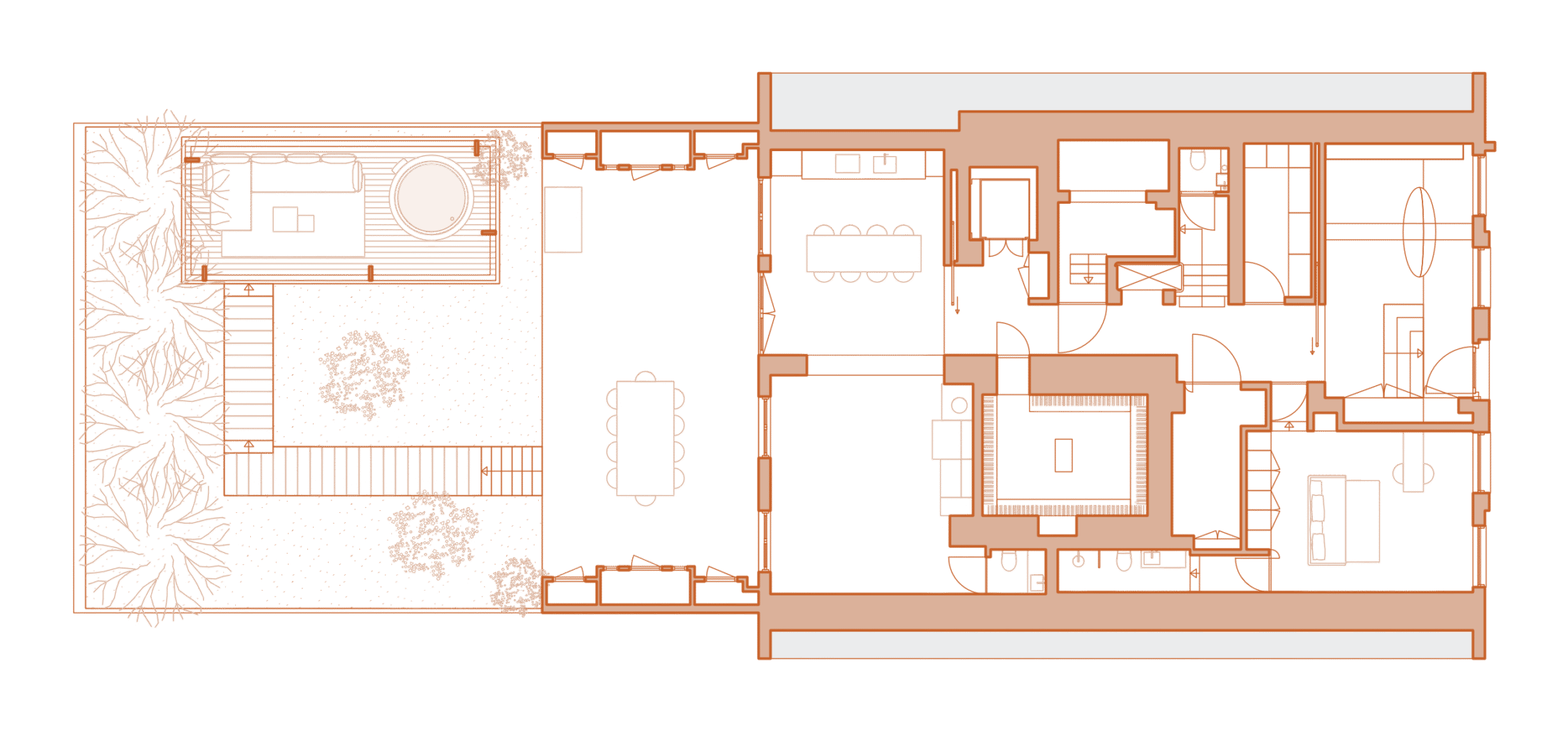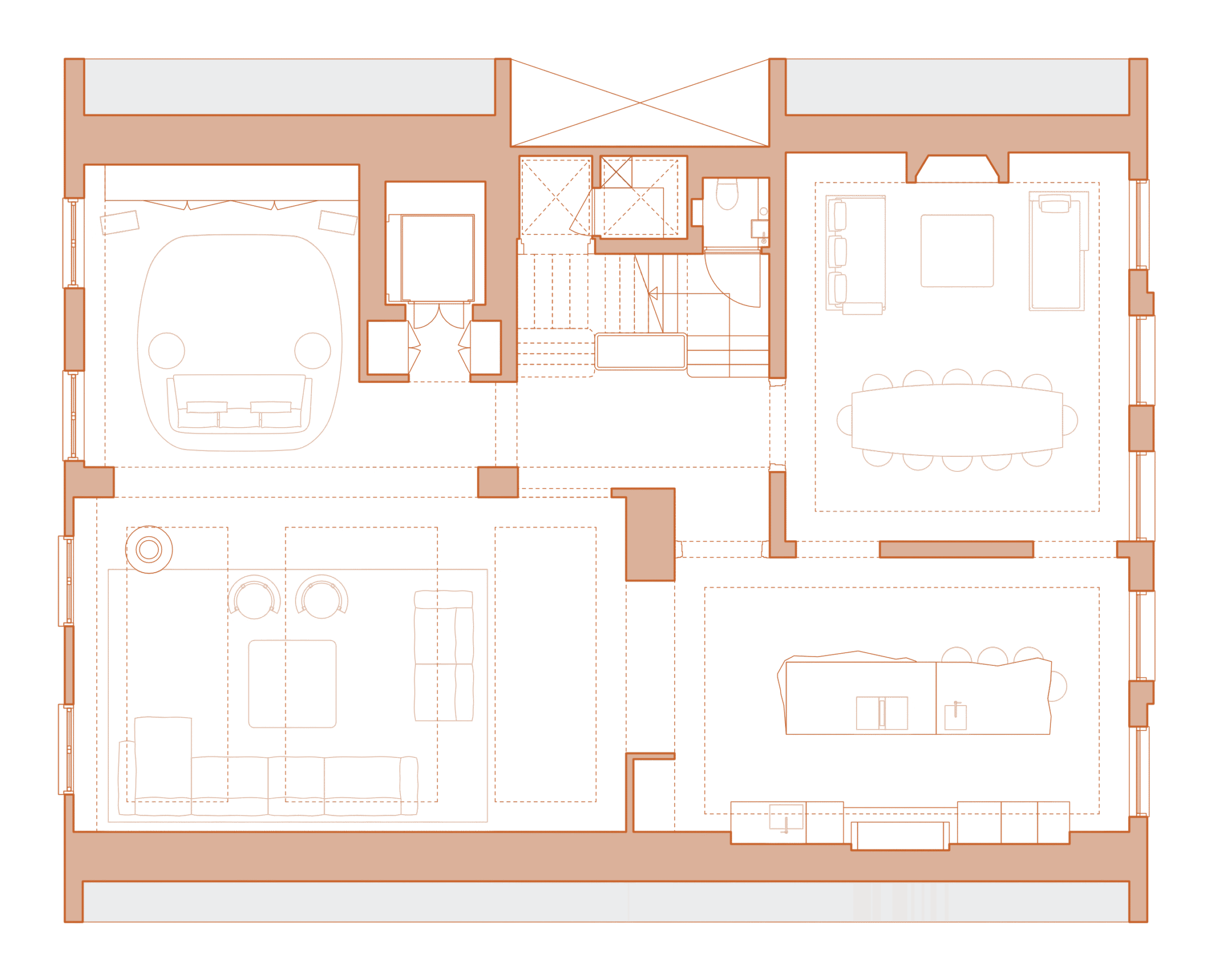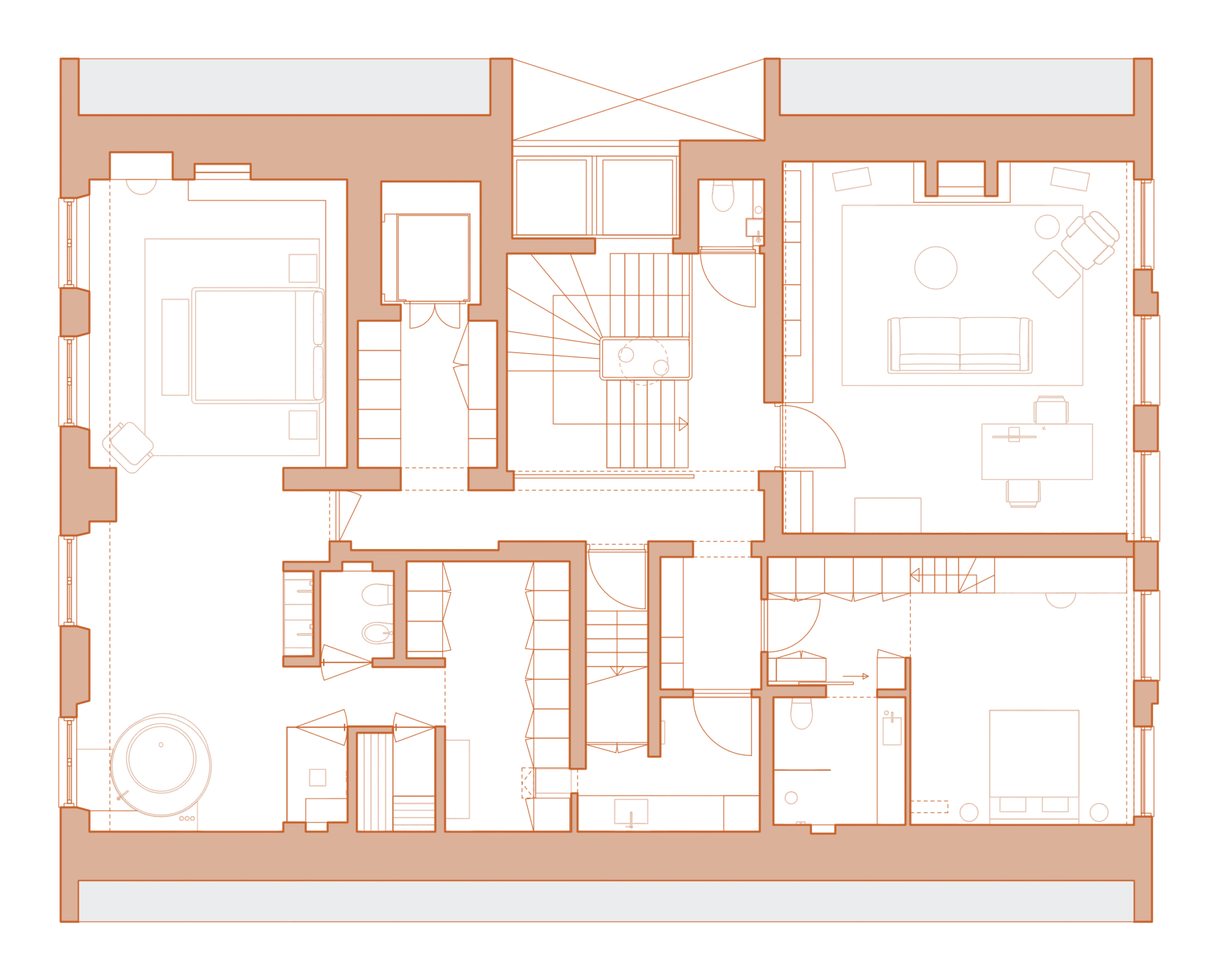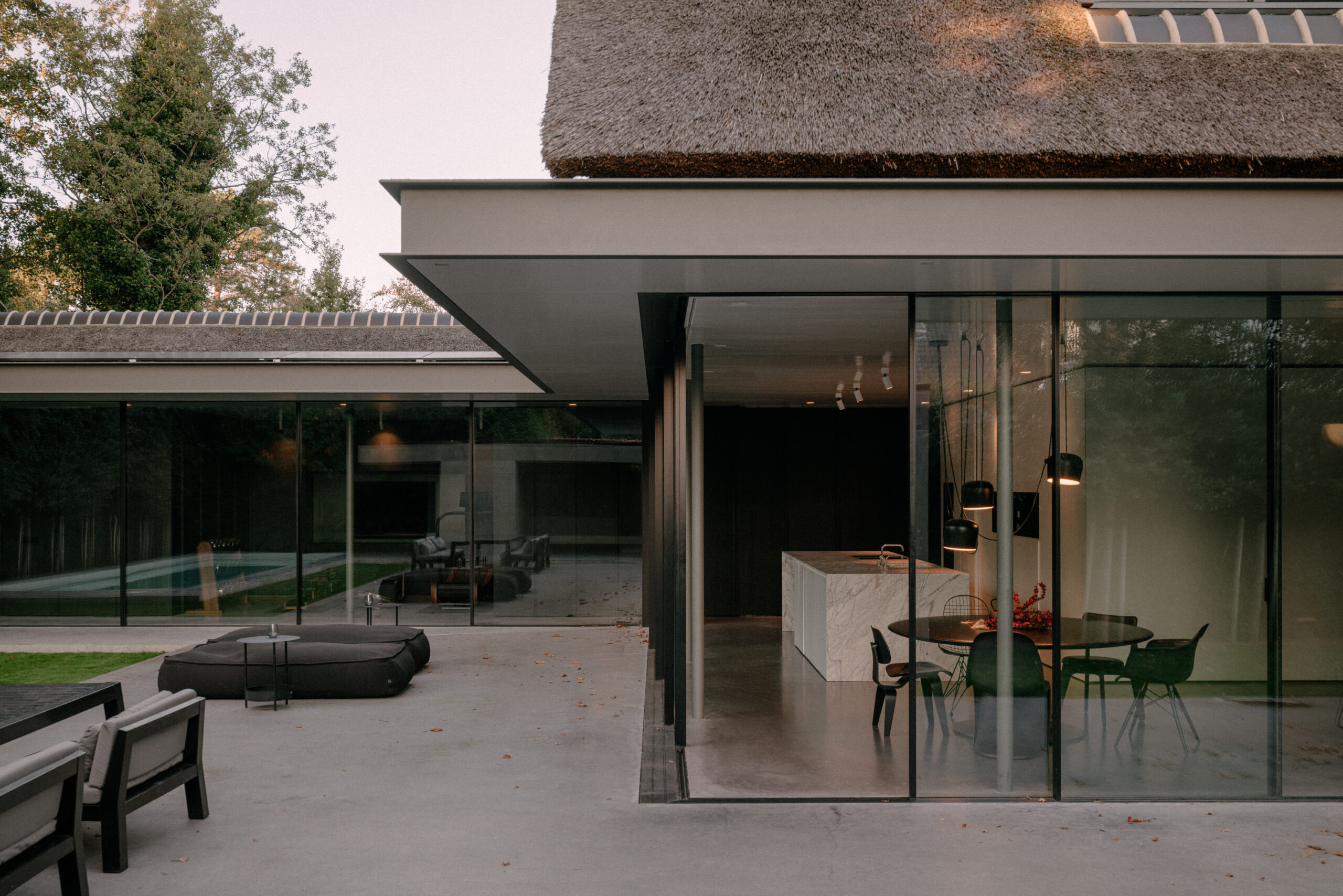Canal house
This double-width canal house has seen many functions and transformations since 1665. Behind its façade hides a timeless interior, with a strong focus on preserving historical details and subtle materiality. Monumental details have been carefully restored; through collaborations with artists, unique furnishings have been created, and the open, clear structure of the original layout has been reinstated.
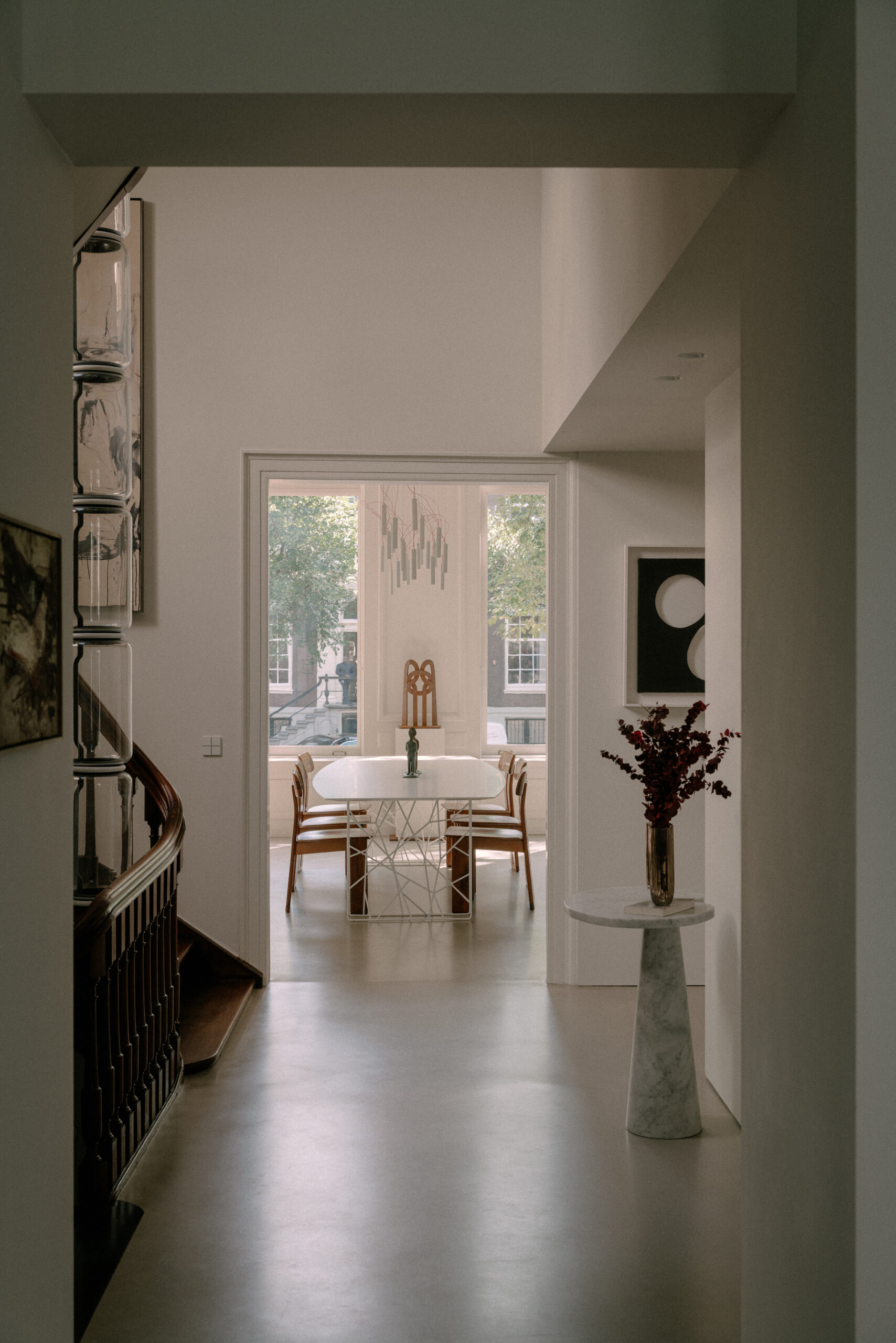
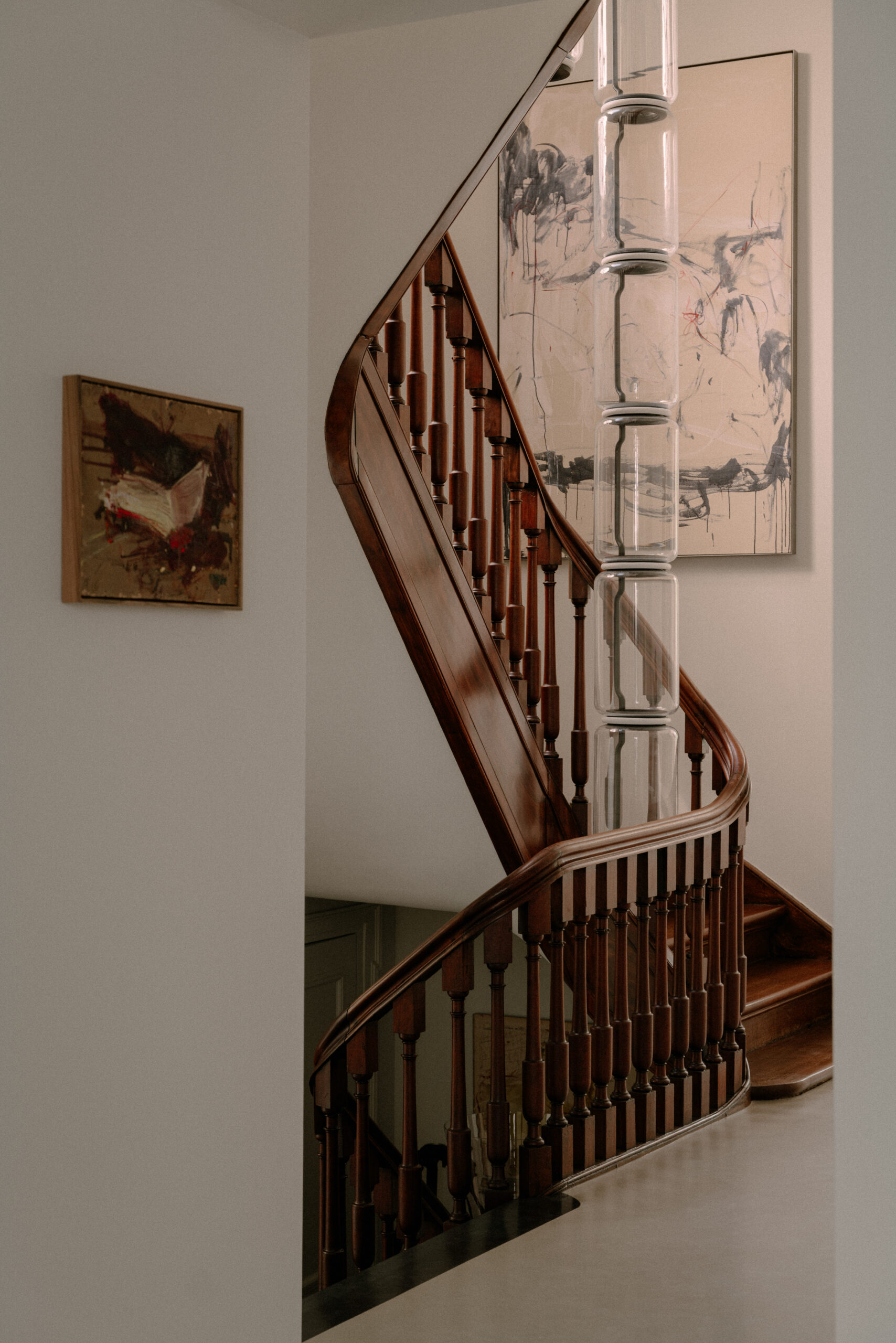
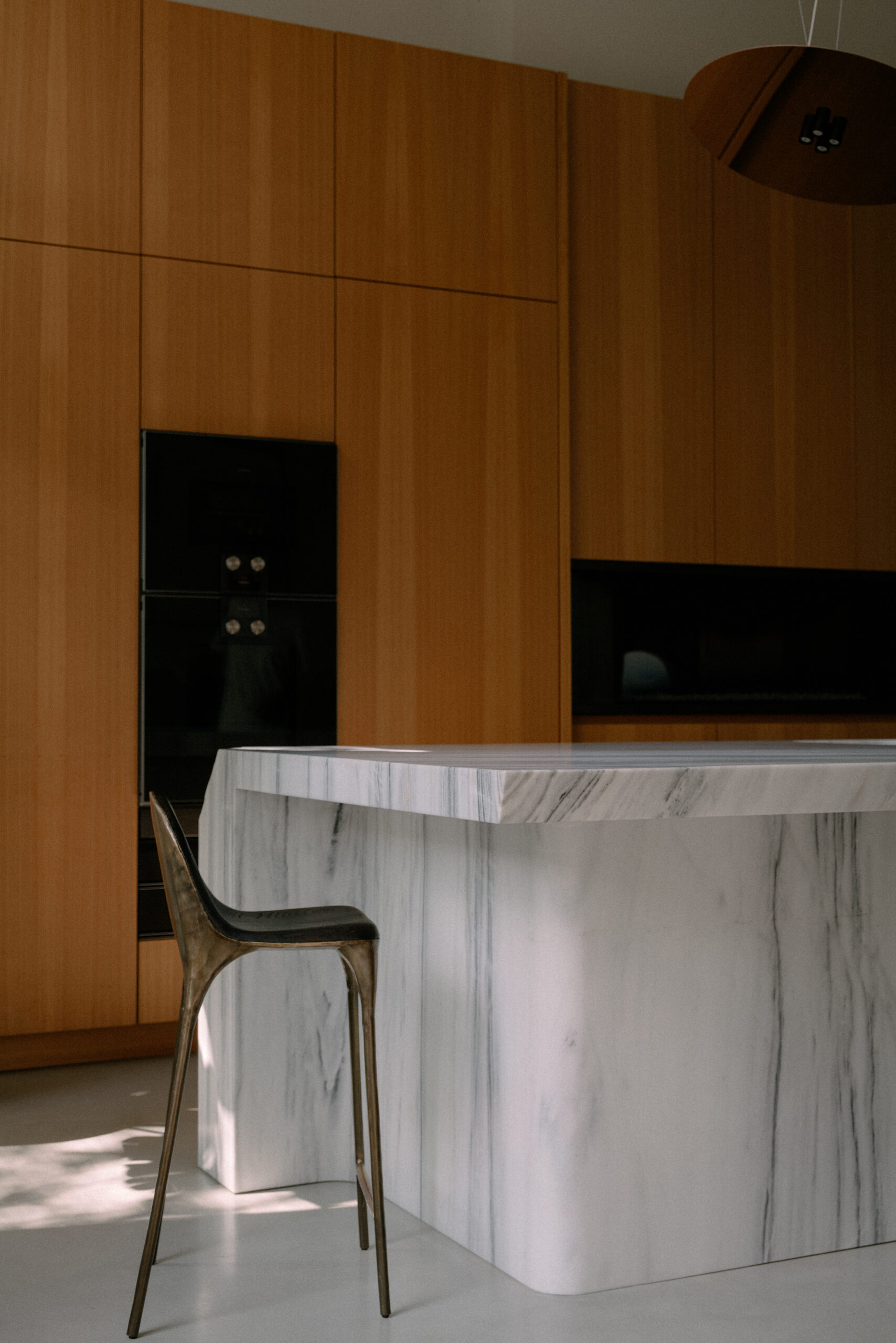

For us, it was essential to maintain the balance between preserving the historic character and equipping the house with all modern-day technologies and comforts. Given the listed status of the property, we dedicated significant time and care to discreetly integrating all technical systems out of sight.


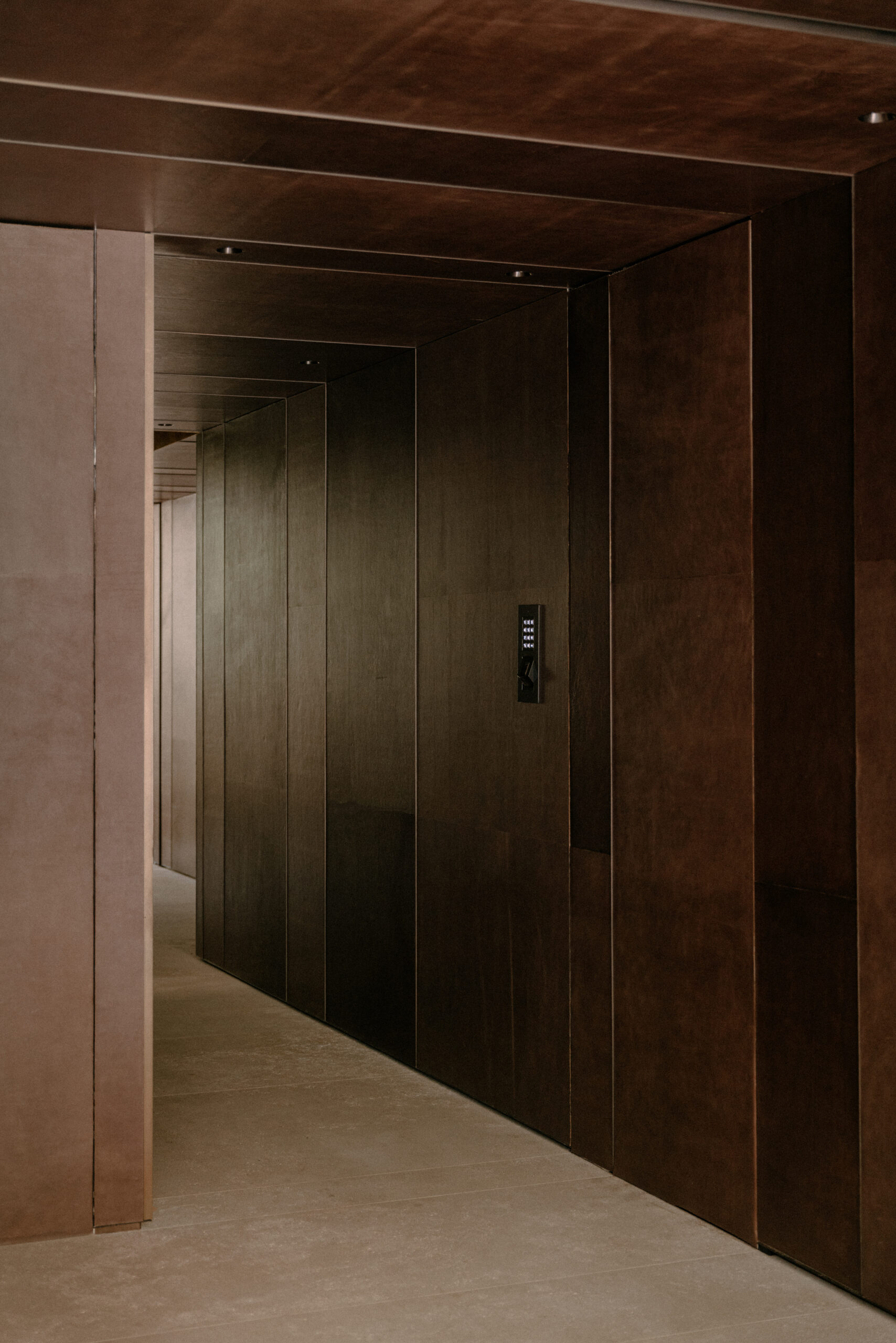
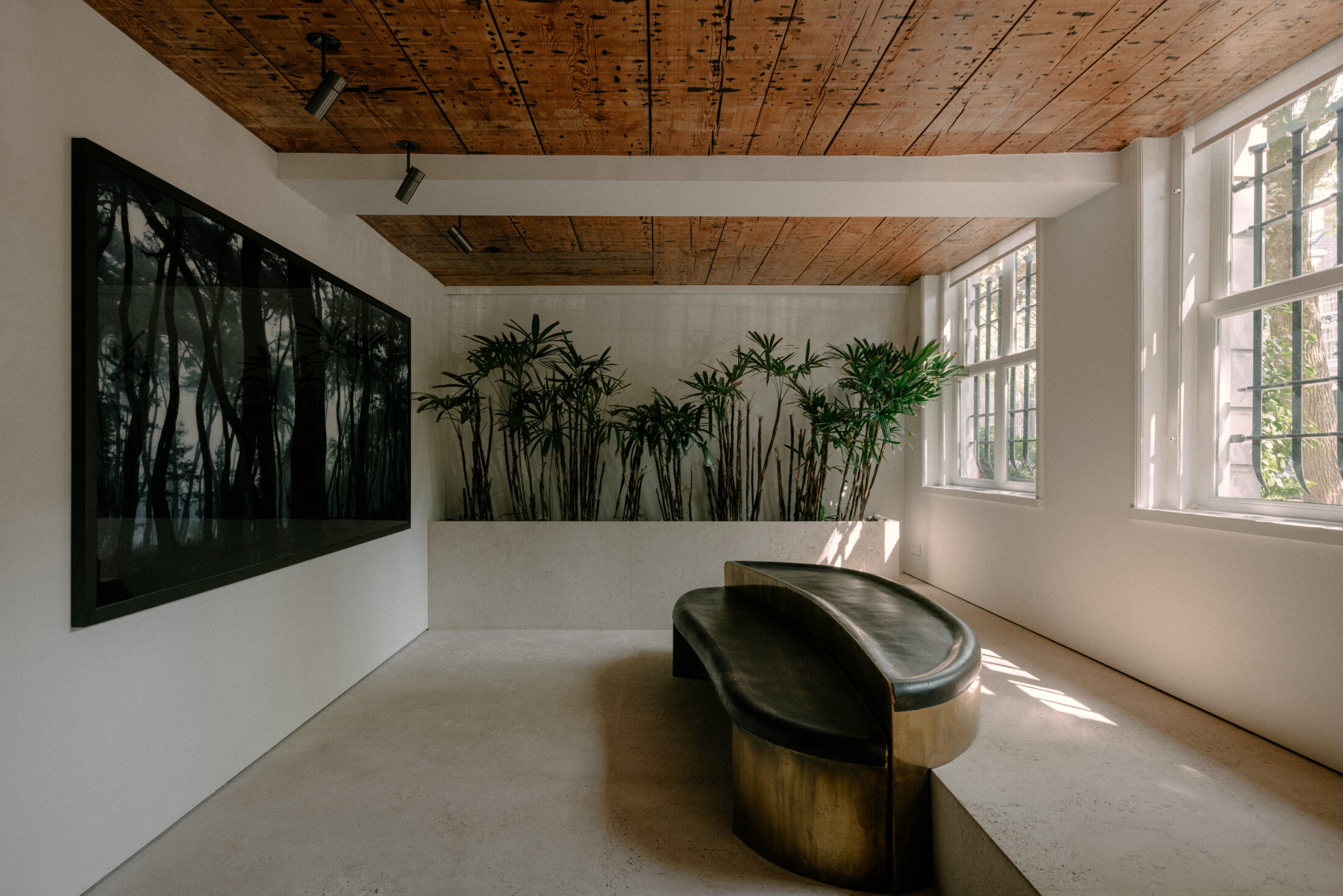
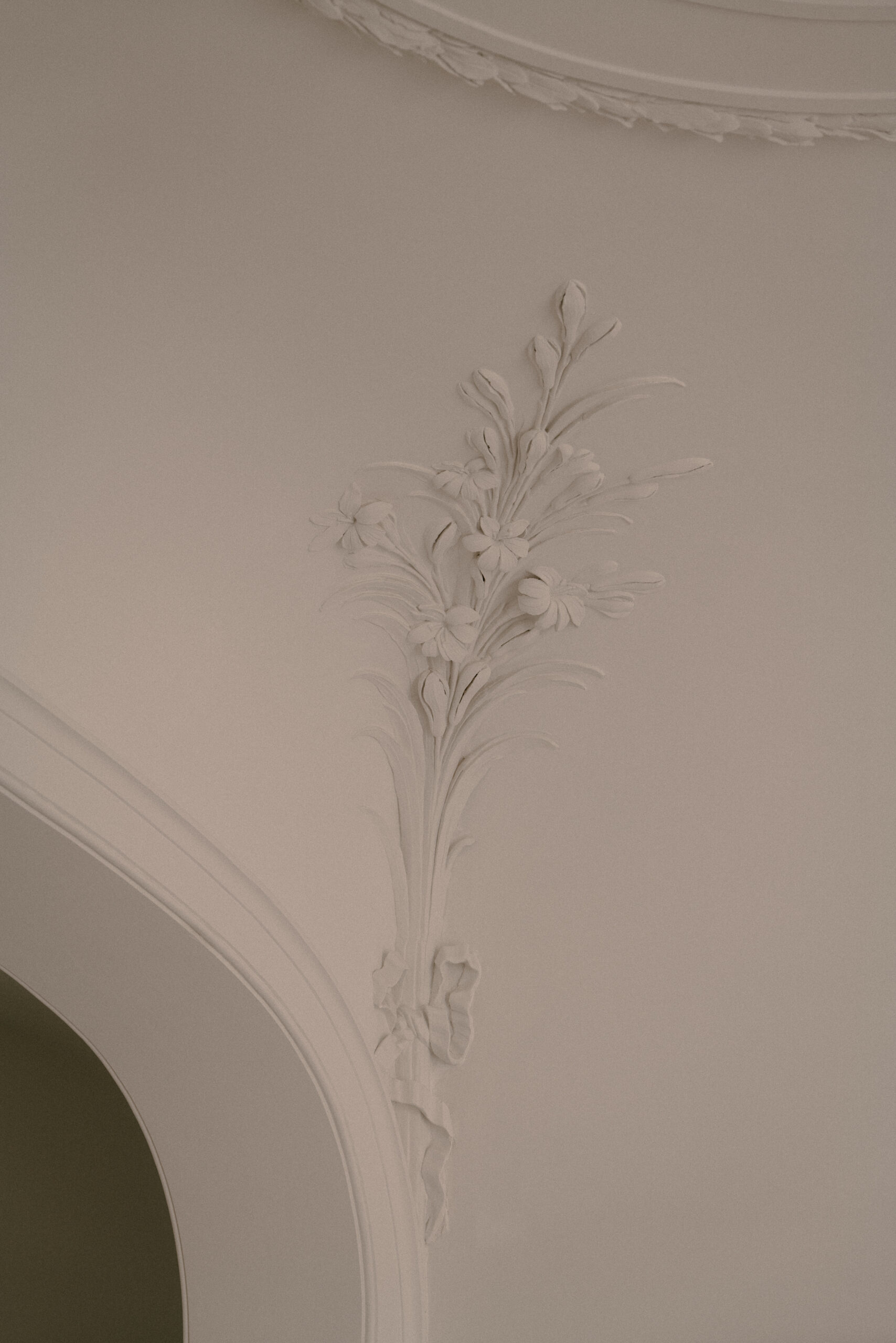
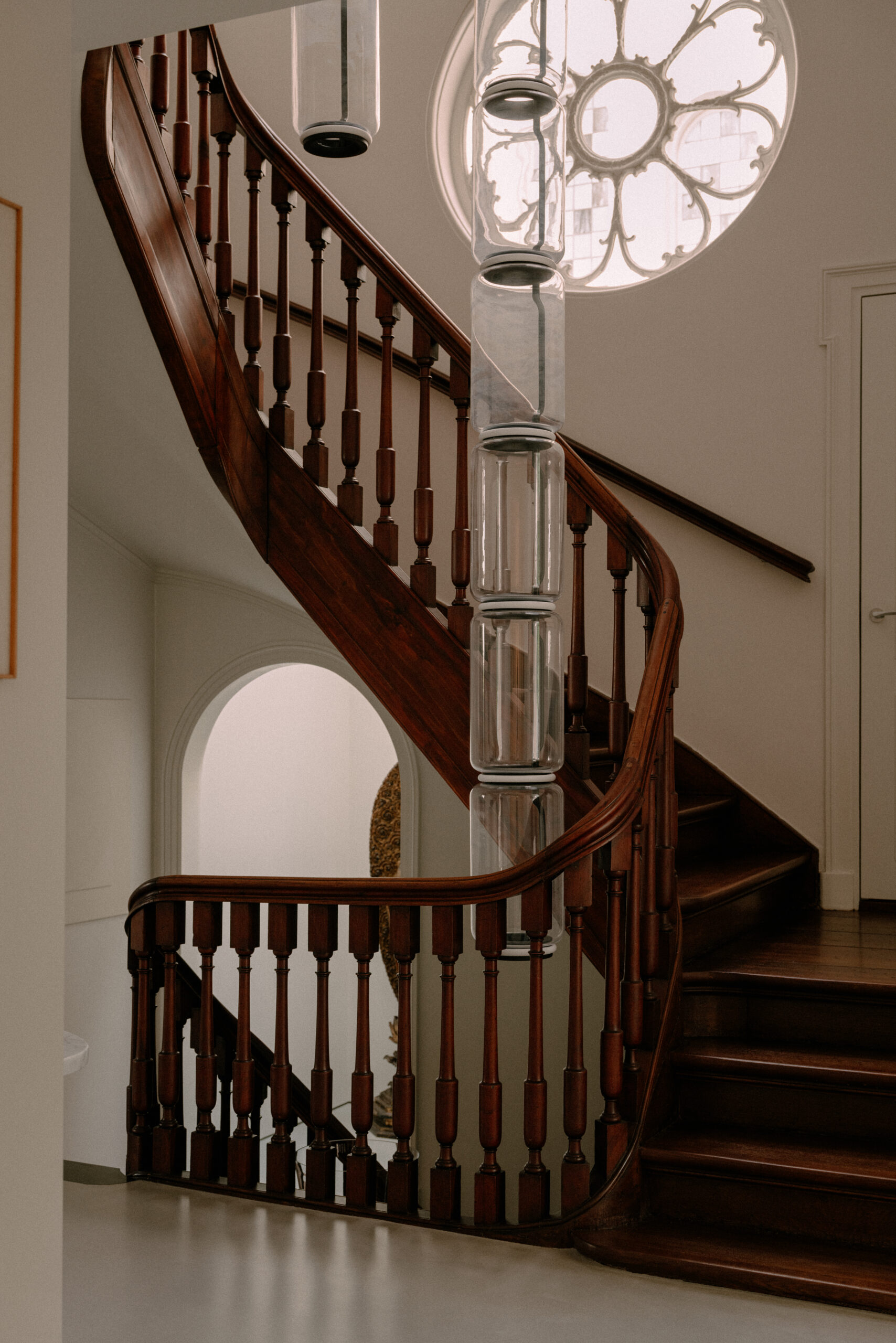
During our initial visits, we encountered a small kitchen and a series of cramped, dark rooms. Much of the monumental structure had been lost in previous renovations. Yet during demolition, we uncovered numerous traces of the building’s former glory, which we then incorporated into the design. Among the discoveries was a coffered wooden ceiling in the living room and finely detailed lilies hidden beneath thick layers of paint above the monumental staircase.
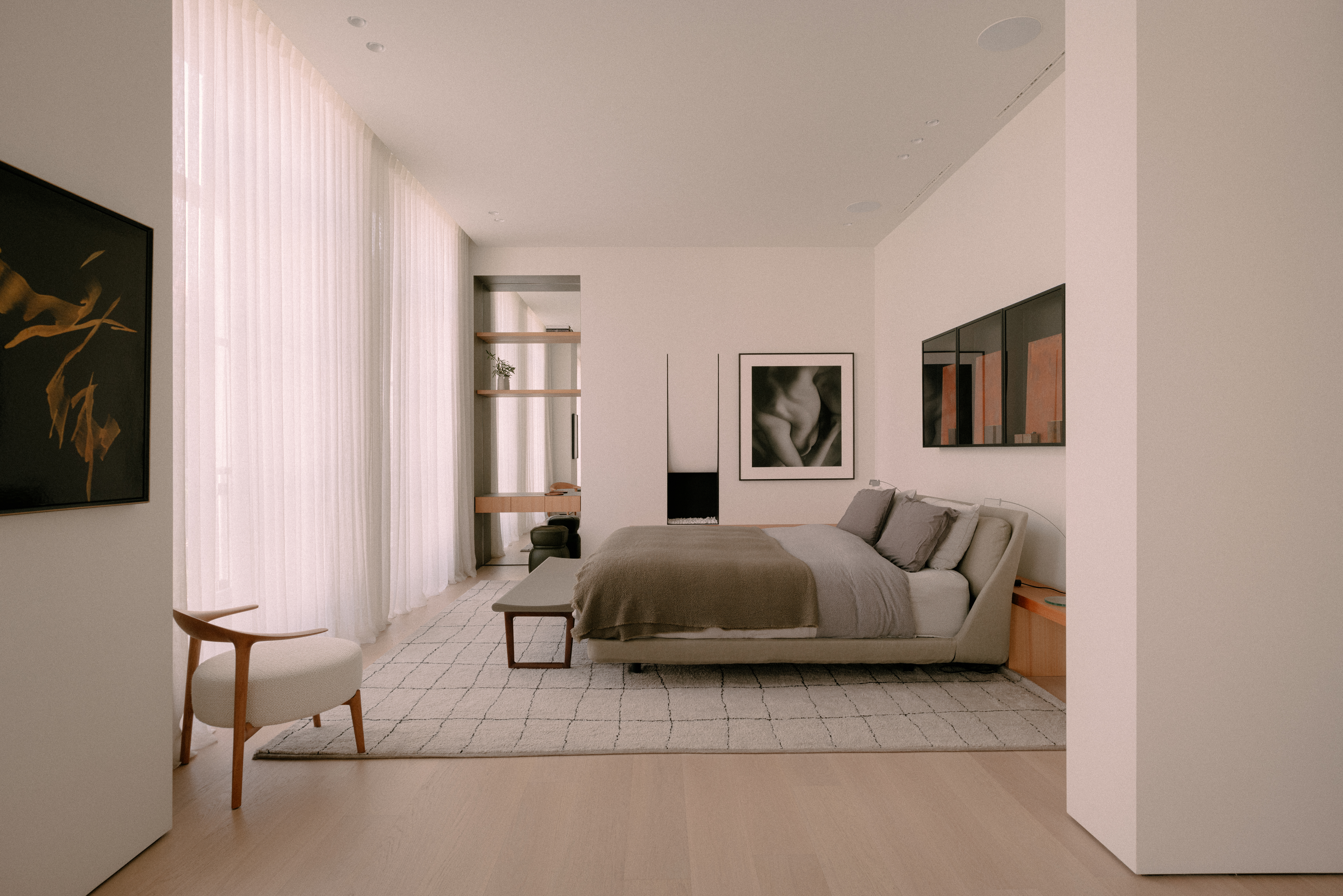
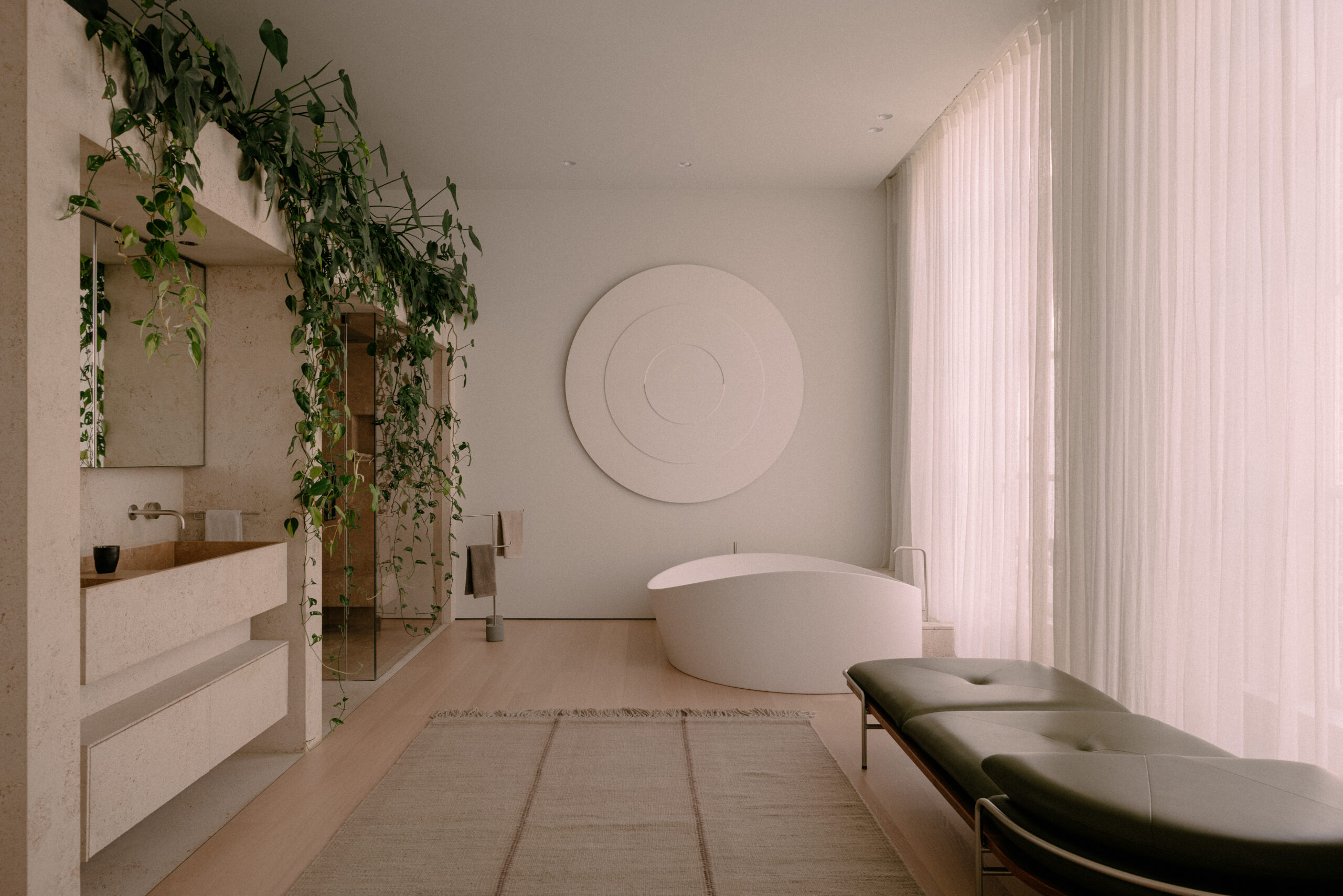
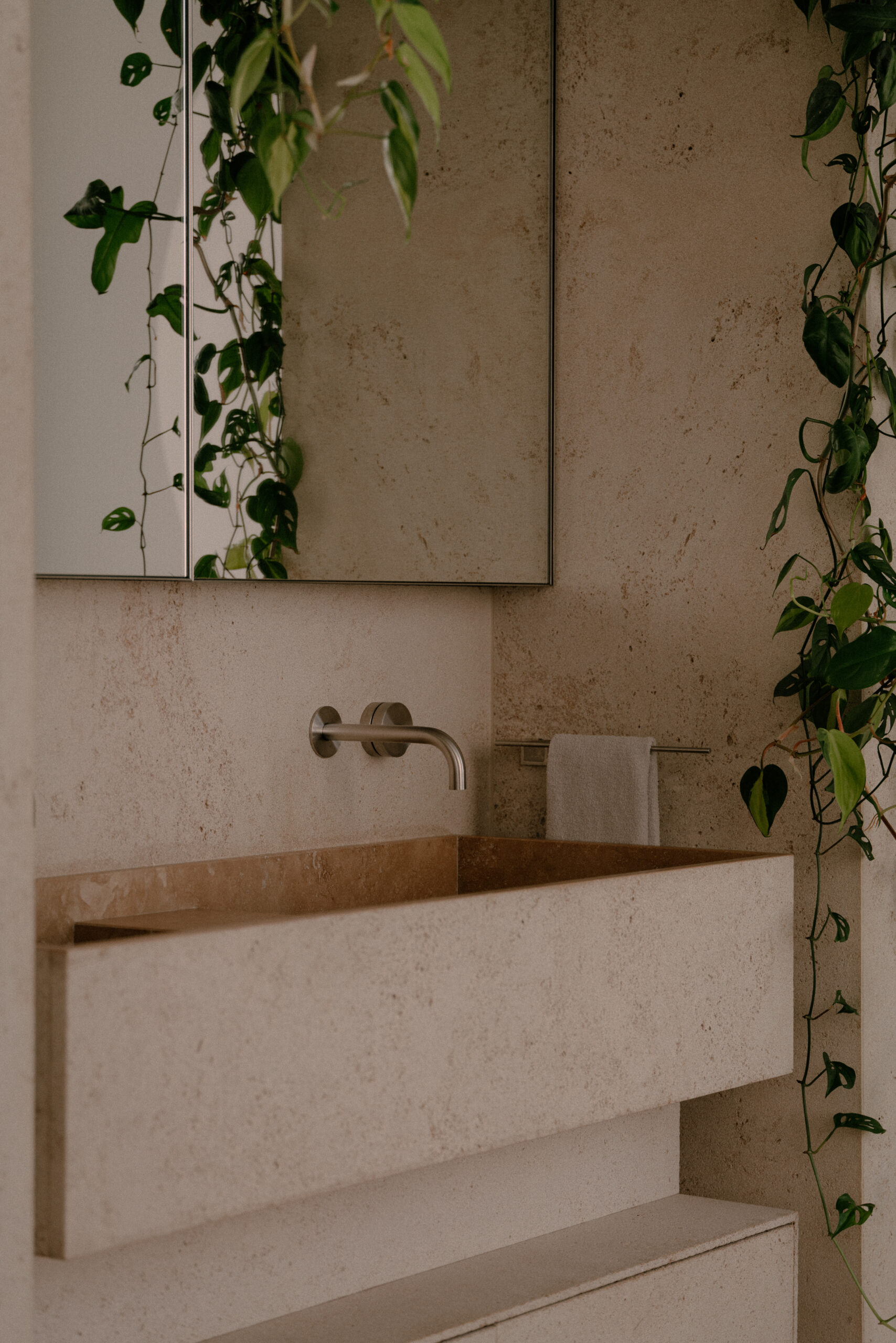
The historical elements were restored with patience and craftsmanship. The interior design responds to the house in a respectful and understated way. Materials and colours were reduced to the essentials. The result is subtle, yet refined—befitting the stature of this listed canal house.
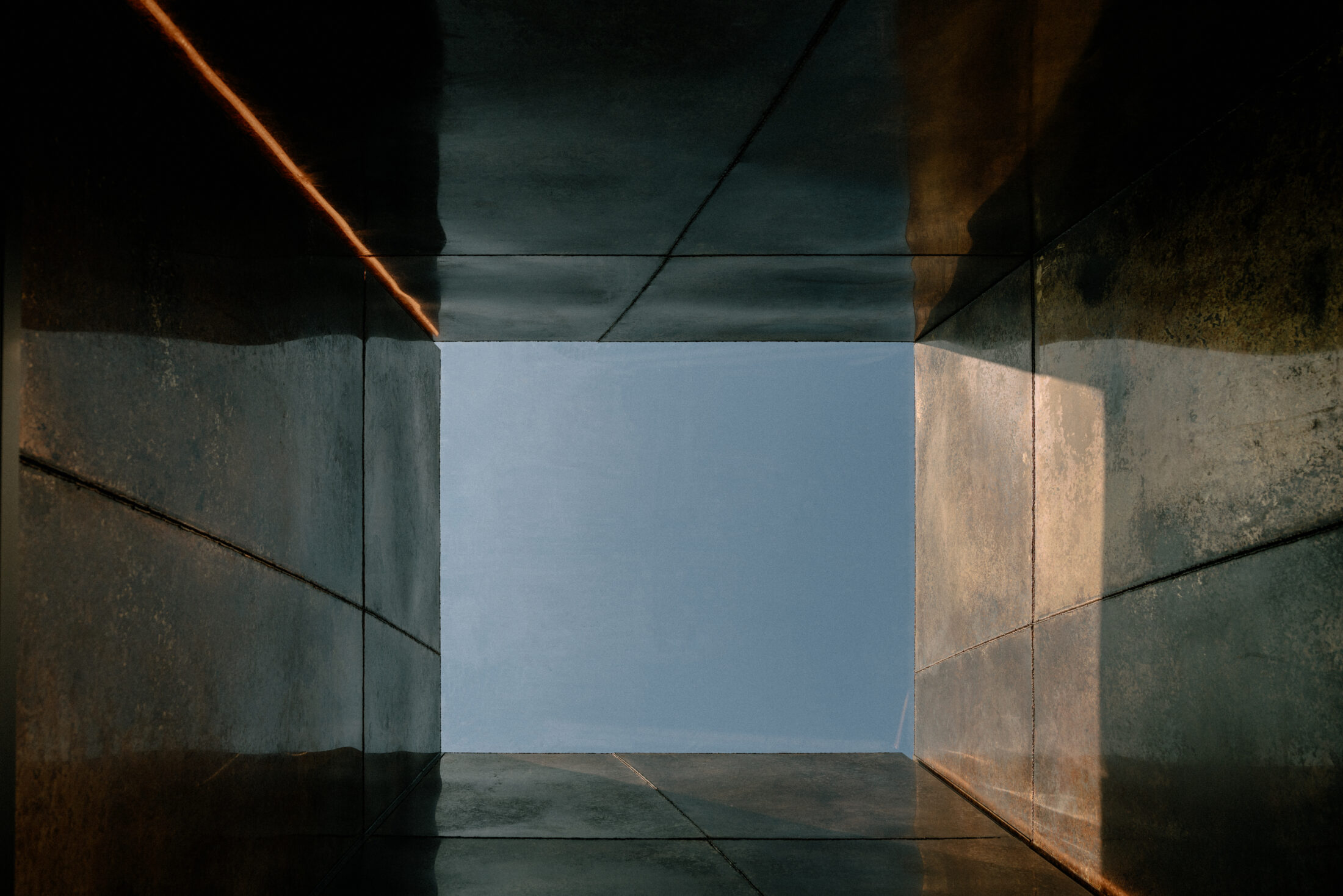
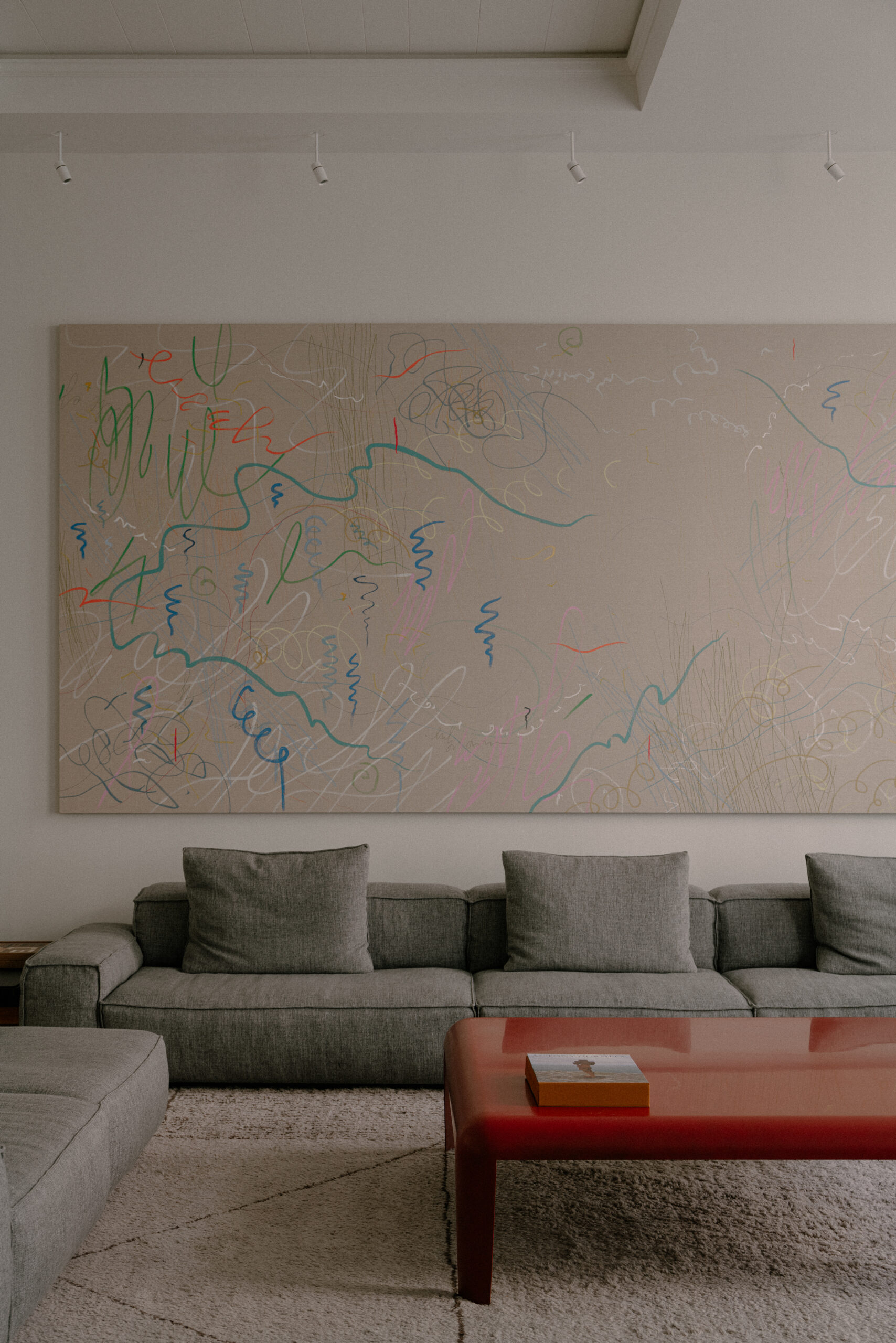
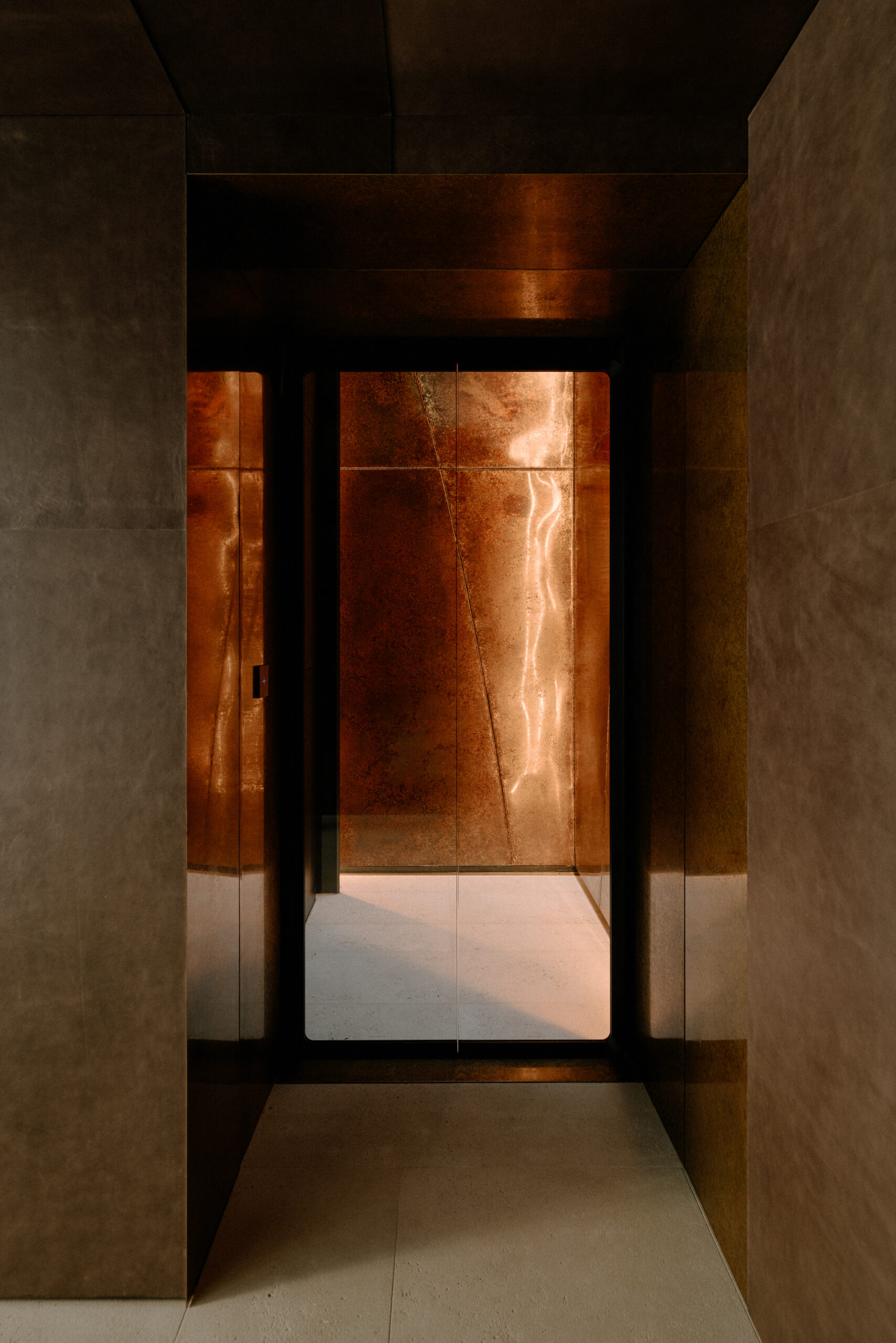
We are always in search of elements that make a home unique and liveable. Materials play a major role in this, which is why we enjoy collaborating with artists who bring a unique perspective to their use. Valentin Loellmann created interior elements for the lift shaft and two fireplaces. A central theme in his work is ‘movement’ and shaping materials by hand. The result is tactile and pure.
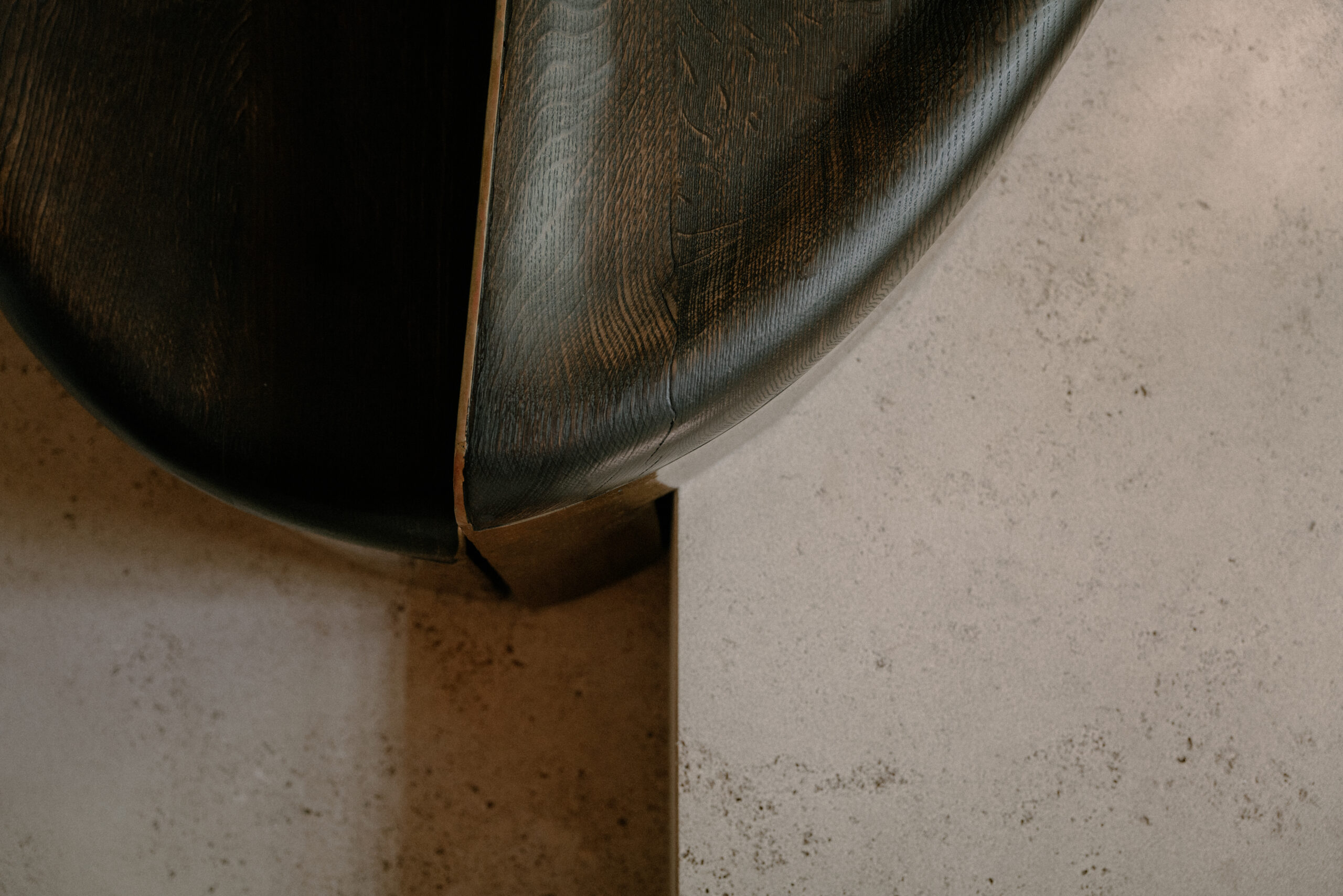
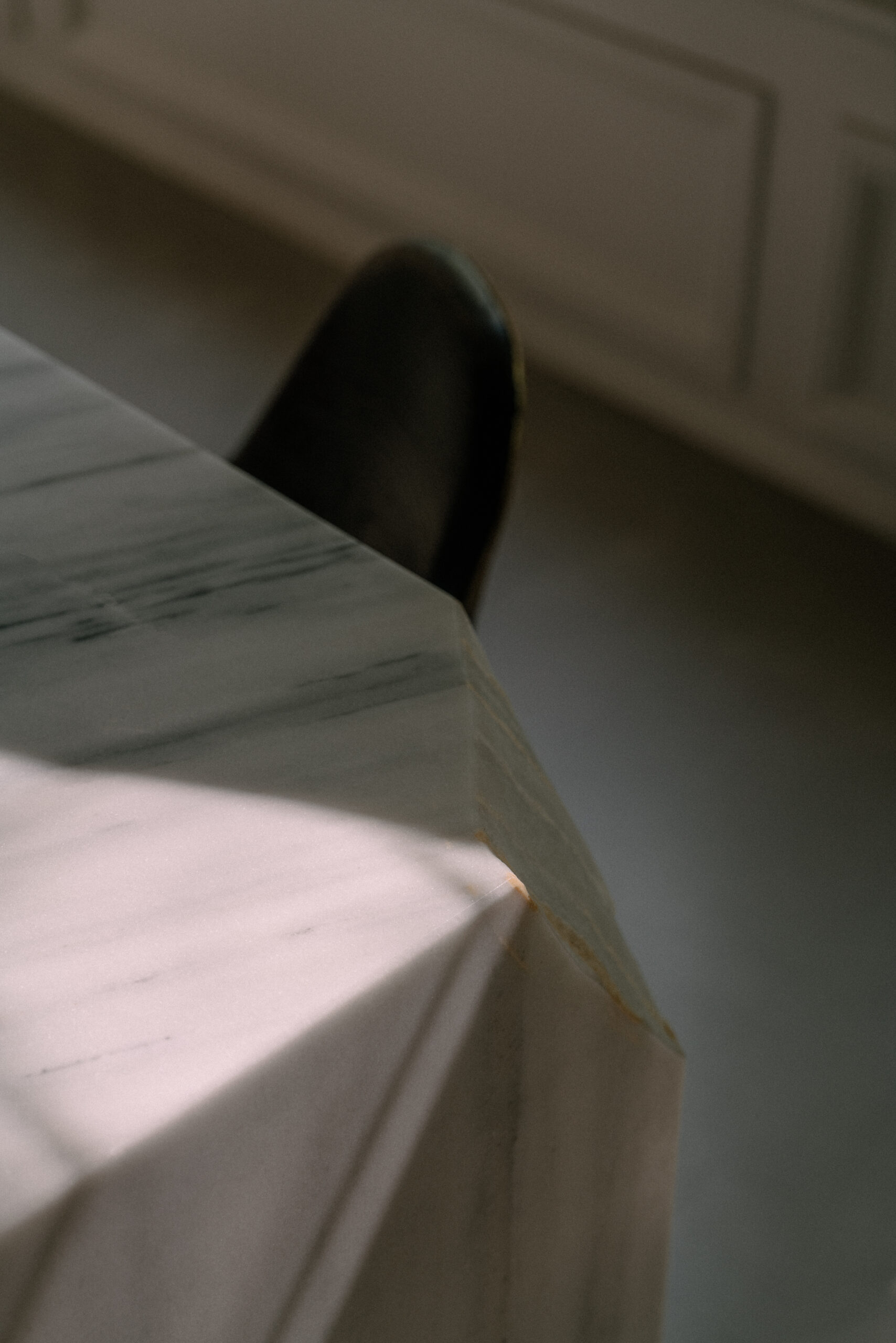
Design team
Beer Ischa, Elwin van Heyningen, Hanna Maring
